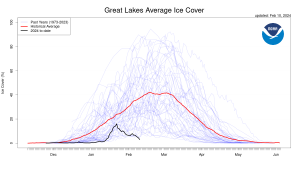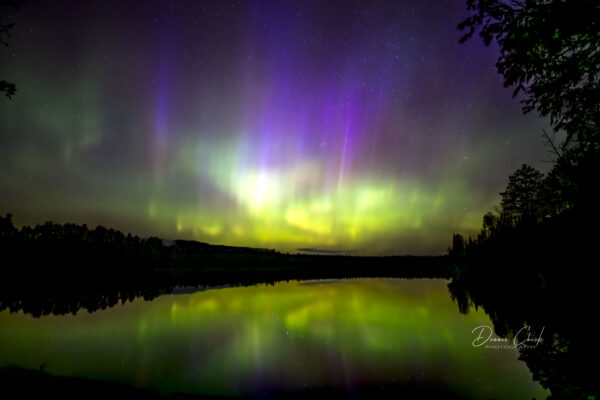Lake Superior experiences minimal ice cover this winter
As winter progresses, the effects of El Niño in northern Minnesota and throughout the Great Lakes region are becoming increasingly evident.
Numerous areas, including Duluth, have recorded temperatures surpassing the average winter temperatures in recent months. The National Weather Service released the January 2024 Climate Summary, showing the highest recorded temperature in Duluth was 47 degrees, compared to an average maximum of 23.1 degrees.
International Falls set a new January record with a high temperature of 55 degrees, compared to the average high of 20.2 degrees.
Ice cover on Lake Superior and the Great Lakes is a vital function of average winter air temperature. The result of warmer temperatures has a direct link to minimal ice formation and can have lasting ecological implications.
“Ice provides shelter for spawning fish,” Jay Austin, a professor in the Department of Physics and Astronomy and the Large Lakes Observatory, said. Many fish species will use the ice for protection from predators during the spawning season.
In addition, Austin said, “Ice tends to act as sort of armor for coastlines against storms.” In low-ice years, erosion will become more evident as storms impact and erode shorelines.
As for ice cover this year, Austin said, “We topped out Great Lakes wide at about 15 percent a week or two ago.” The Great Lakes experiences approximately 30 to 40 percent ice cover yearly, Austin said. The 15 percent ice cover, a high of the season so far, occurred during the recent cold snap experienced across Minnesota and the Midwest in January.
Since then, temperatures have rebounded into the 30s and 40s, and ice cover on Lake Superior and the other Great Lakes has significantly decreased.
Austin said Lake Superior experiences high variability in ice cover each winter and is incredibly sensitive to small changes in air temperature compared to the other Great Lakes. In early Feb., Lake Superior hovered around 10 percent ice cover, he said.
Looking ahead for the rest of the winter, given the outlook for continued warmer temperatures, Austin said, “I think we’re basically done.”
National Oceanic and Atmospheric Administration (NOAA) data shows that Lake Superior and the other Great Lakes are well below the average ice cover this winter.


WTIP’s Kalli Hawkins spoke with Jay Austin, a professor in the Department of Physics and Astronomy and the Large Lakes Observatory, about Lake Superior ice cover given the warmer winter temperatures and ongoing research to study the relationship between air temperatures and ice formation. Audio from the interview is below.














